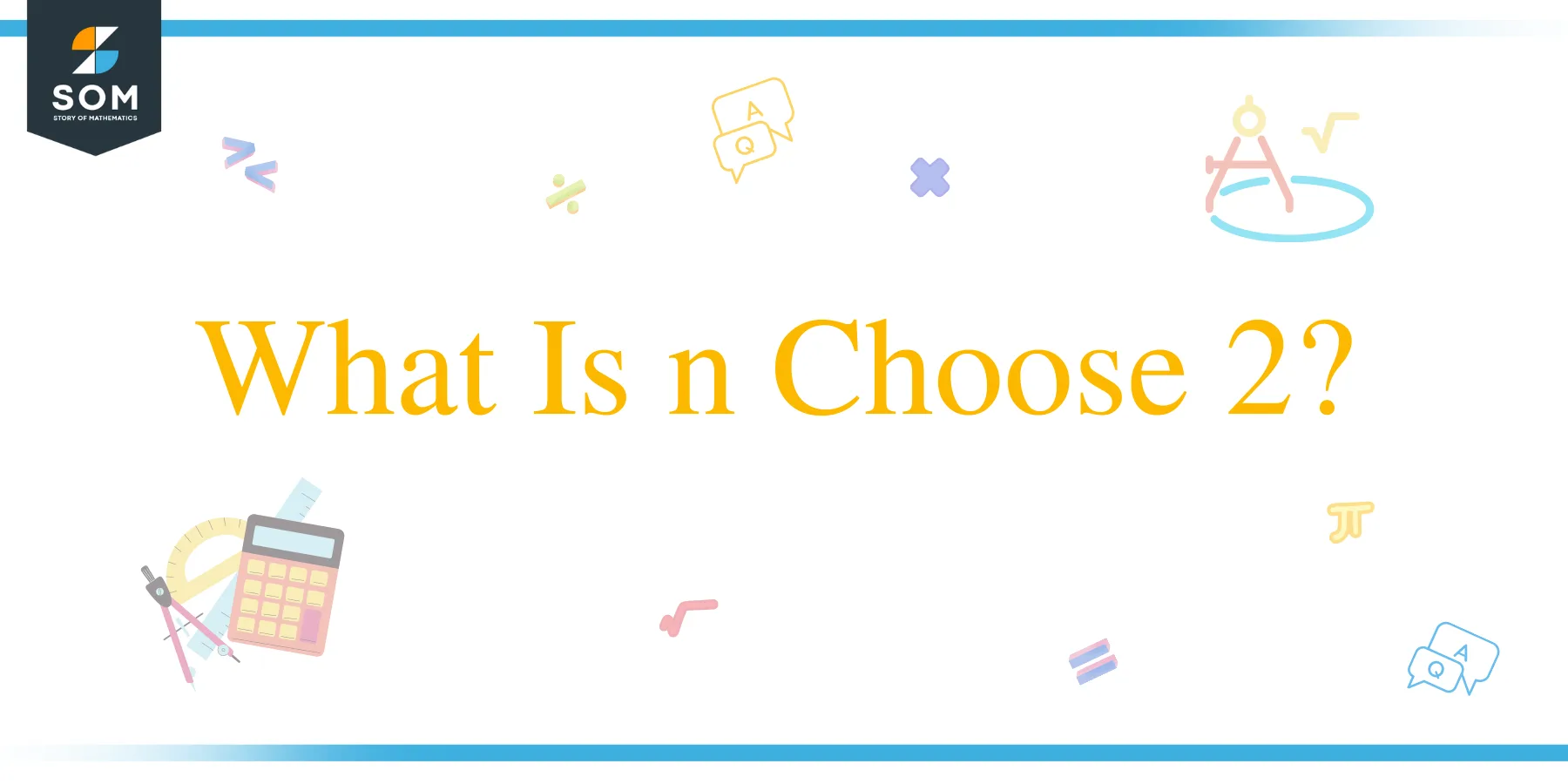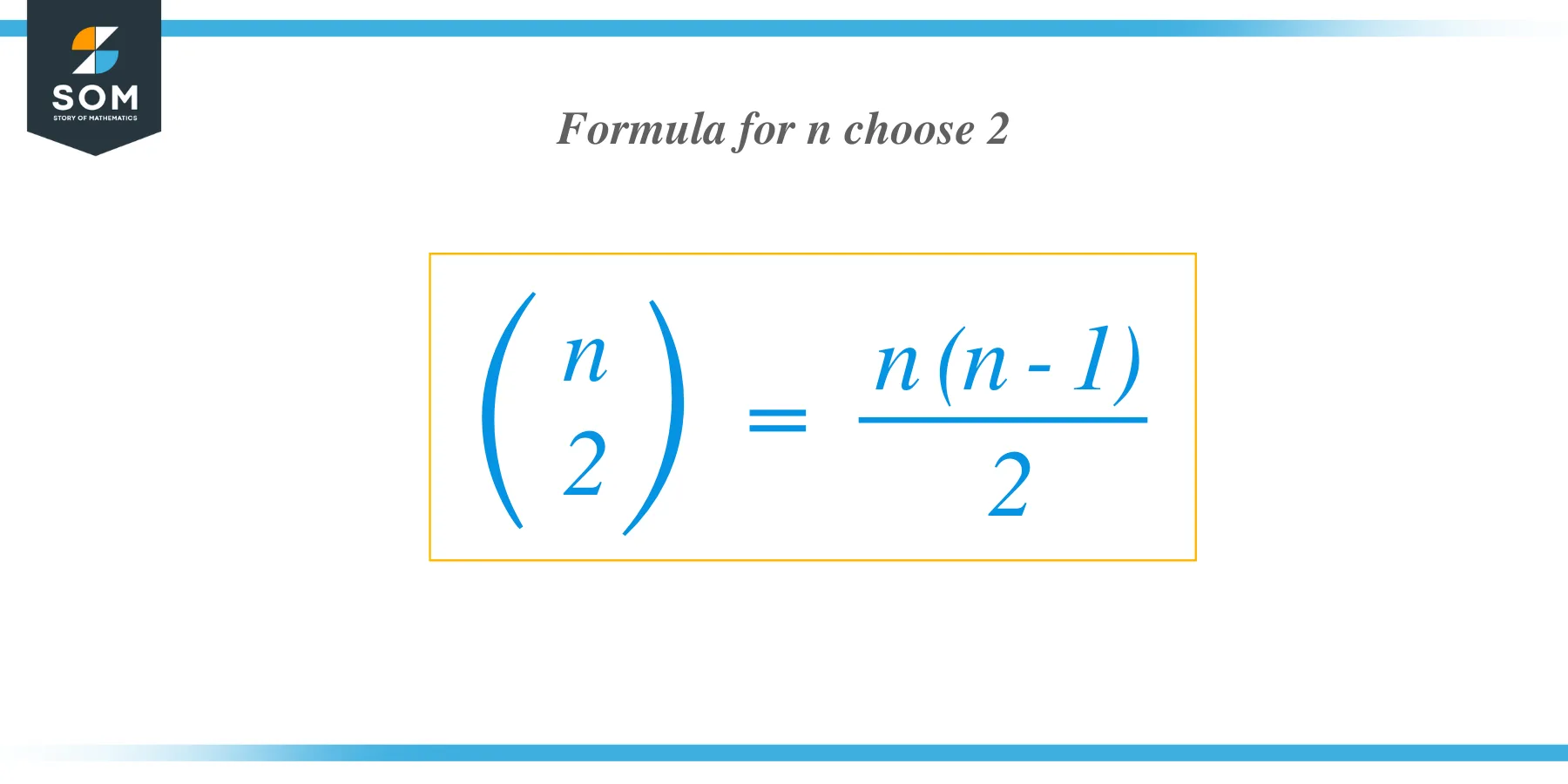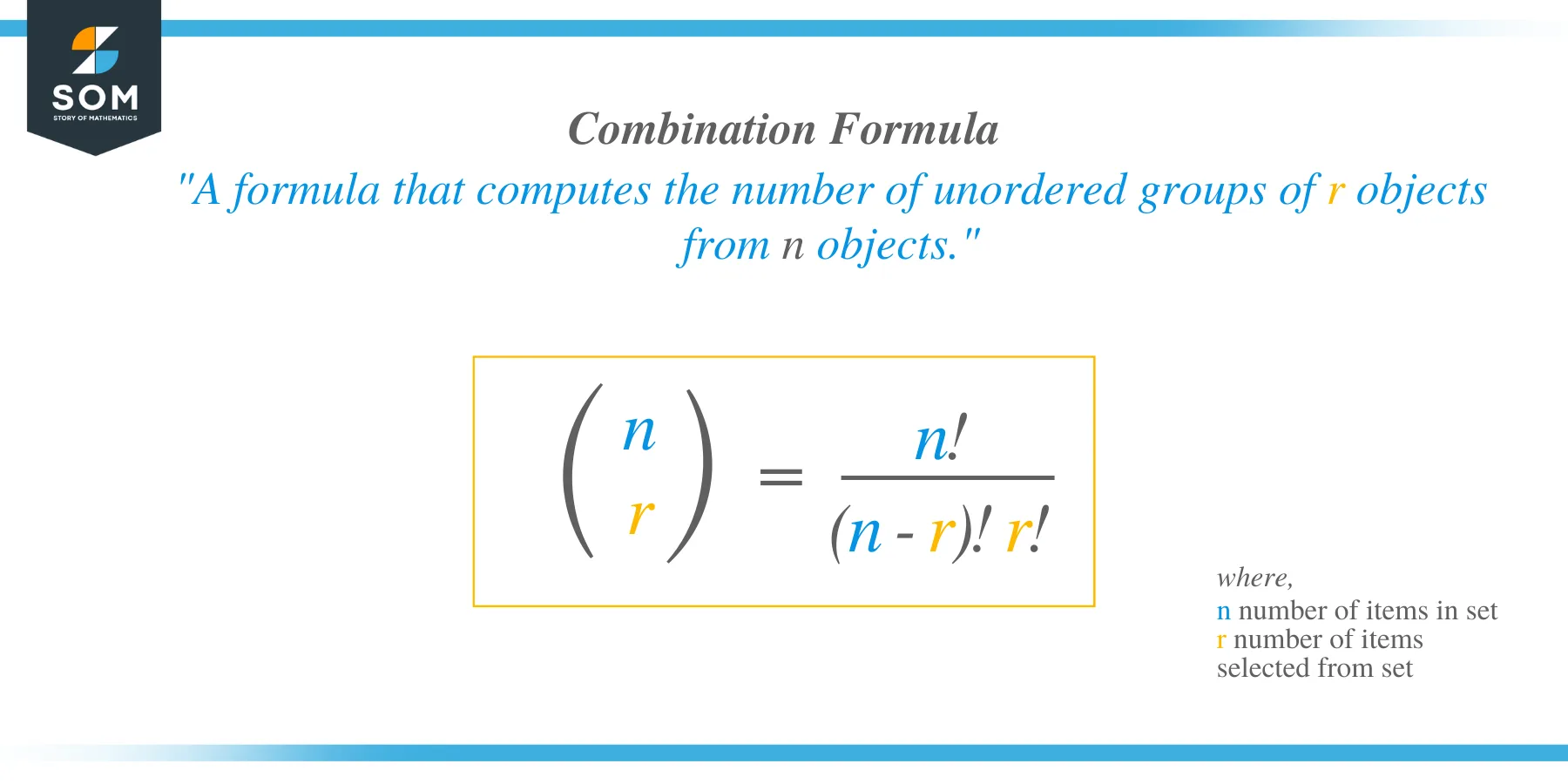JUMP TO TOPIC
 Solving for $n$ choose $2$ means finding the number of ways of choosing $2$ items from a group with a population of $n$. This is a problem that uses combination formula. However, after the derived formula for $n$ choose $2$ after using the combination formula, we observe that it is an expression for something else. Read this guide to know what is $n$ choose $2$ equivalent to.
Solving for $n$ choose $2$ means finding the number of ways of choosing $2$ items from a group with a population of $n$. This is a problem that uses combination formula. However, after the derived formula for $n$ choose $2$ after using the combination formula, we observe that it is an expression for something else. Read this guide to know what is $n$ choose $2$ equivalent to.
What Is $n$ Choose 2?
The expression $n$ choose $2$, in symbol $\binom{n}{2}$, is the sum of the first consecutive $n-1$ integers. That is, the sum of $1,2,3,\dots,n-1$ is equal to $n$ choose $2$. In mathematical notation, we express it as:
\begin{align*}
1+2+\dots+n-1= \sum_{i=1}^{n-1} i=\binom{n}{2}.
\end{align*}
Using the formula for summation, we know that the sum of the first $n$ integers is $\dfrac{n(n+1)}{2}$. Thus, we have
\begin{align*}
\sum_{i=1}^{n-1} i=\dfrac{(n-1)(n-1+1)}{2}=\dfrac{(n-1)n}{2}=\binom{n}{2}.
\end{align*}
Hence, $n$ choose $2$ is equal to $\dfrac{n(n-1)}{2}$.
Combination Counting Technique
Example
For instance, we want to know the number of ways of selecting three letters from the letters $A,B,C,D,E$. Using a manual enumeration and grouping of letters, we get the following groupings of letters:
\begin{align*}
ABC,ABD,ACD,ACE,ADE,BCD,BCE,BDE,CDE.
\end{align*}
Note that we no longer put $CEA$ because it is the same as $ACE$ since the order does not matter. From this, we can see that we are able to list down 10 groups of letters. Thus, there are 10 possible ways of forming a group of three letters from a group of five letters.
What Is the Combination Formula?
The combination formula is a formula that computes the number of unordered groups of $r$ objects from $n$ objects. This can also be interpreted as the number of combinations of $n$ objects taken $r$ at a time, denoted by $\binom{n}{r}$. The formula for combination is given by
\begin{align*}
\binom{n}{r}=\dfrac{n!}{\left(n-r\right)!r!}.
\end{align*}
The notation $\binom{n}{r}$ can also be read as $n$ choose $r$. The combination formula is used to ease up solving problems involving combination counting techniques and probabilities so that we don’t have to enumerate all the possible combinations. The formula is a very helpful tool, especially for large values of $n$ and $r$.
Recall: Factorial Notation
Example: Evaluate 4 choose 3
Evaluating $n$ Choose 2
Evaluating $n$ choose 2 will give us the formula
\begin{align*}
\binom{n}{2}=\dfrac{n\left(n-1\right)}{2}.
\end{align*}
We use the combination formula to derive the $n$ choose 2 formula. Plugging in $r=2$ in the combination formula, we have
\begin{align*}
\binom{n}{2}&=\dfrac{n!}{\left(n-2\right)!2!}.
\end{align*}
Note that $n!$ can be expressed as
\begin{align*}
n!=n\times\left(n-1\right)\times\left(n-2\right)!.
\end{align*}
Thus, we have
\begin{align*}
\binom{n}{2}&=\dfrac{n!}{\left(n-2\right)!2!}\\
&=\dfrac{\left(n\times\left(n-1\right)\times\left(n-2\right)!\right)}{\left(n-2\right)!2!}\\
&=\dfrac{n\left(n-1\right)}{2!}\\
&=\dfrac{n\left(n-1\right)}{2}.
\end{align*}
Note that, since $n$ is a variable, then we cannot directly solve or express $\binom{n}{2}$ as a number. Hence, we can only form the corresponding formula in evaluating n choose 2.
We can now use this $n$ choose 2 simplified formula to solve for problems involving choosing 2 objects from a number of objects without using the initial combination formula.
Example
- What is 6 choose 2?
Since $n$ choose 2 is the sum of the first $n-1$ integers, then 6 choose 2 is the sum of the first 5 integers. That is,
\begin{align*}
\binom{6}{2} = 1+2+3+4+5.
\end{align*}
Letting $n=6$, and using the formula, we have
\begin{align*}
\binom{6}{2} = \dfrac{6(6-1)}{2}=\dfrac{(6)(5)}{2}=15.
\end{align*}
We verify this by taking the sum of 1, 2, 3, 4, 5. Thus, we have
\begin{align*}
1 + 2 + 3 + 4 + 5= 15.
\end{align*}
Hence,
\begin{align*}
\binom{6}{2} = 1+2+3+4+5 = 15.
\end{align*}
Example: Solve for 5 Choose 2
Example: Evaluate 12 Choose 2
Importance of n Choose 2
Sum of n Choose 2
Example
Simplifying n Choose 3
Example: What is 7 choose 3?
Conclusion
In this article, we focused on evaluating $n$ choose 2, its equivalence and importance, and some of the consequences of its properties. We list down a summary of the vital points in this discussion.
- $n$ choose 2 is the sum of the first consecutive $n-1$ integers.
- The simplified formula for $n$ choose 2 is given by $\binom{n}{2}=\dfrac{n\left(n-1\right)}{2}$.
- The sum of the first $n-1$ integers is equal to $n$ choose 2.
- The sum of the sequence generated by $n$ choose 2 is $\binom{n+1}{3}$.
- The simplified formula for $n$ choose 3 is given by $\binom{n}{3}=\dfrac{n\left(n-1\right)\left(n-2\right)}{6}$.
The combination counting techniques are used in determining binomial coefficients and could be further explored to learn more simplified patterns or formulas for the coefficients. The connection between summation and binomial coefficients can also be looked into as established by the expression $n$ choose 2.
